Saying “These are the best roses in the world!” may sound pretentious, but if you truly want a list of the best roses chosen by top rosarians, breeders, and growers from around the world, then the Rose Hall of Fame is where you’ll find them.

Every three years, the World Federation of Rose Societies holds an international convention where they induct a new modern rose variety into the Rose Hall of Fame. This is a list of the world’s favorite roses.
Read on and meet the 18 roses in the Rose Hall of Fame – the highest-acclaimed roses in the world – and discover why rosarians around the world just can’t get enough of them!
Jump to:
‘Peace’
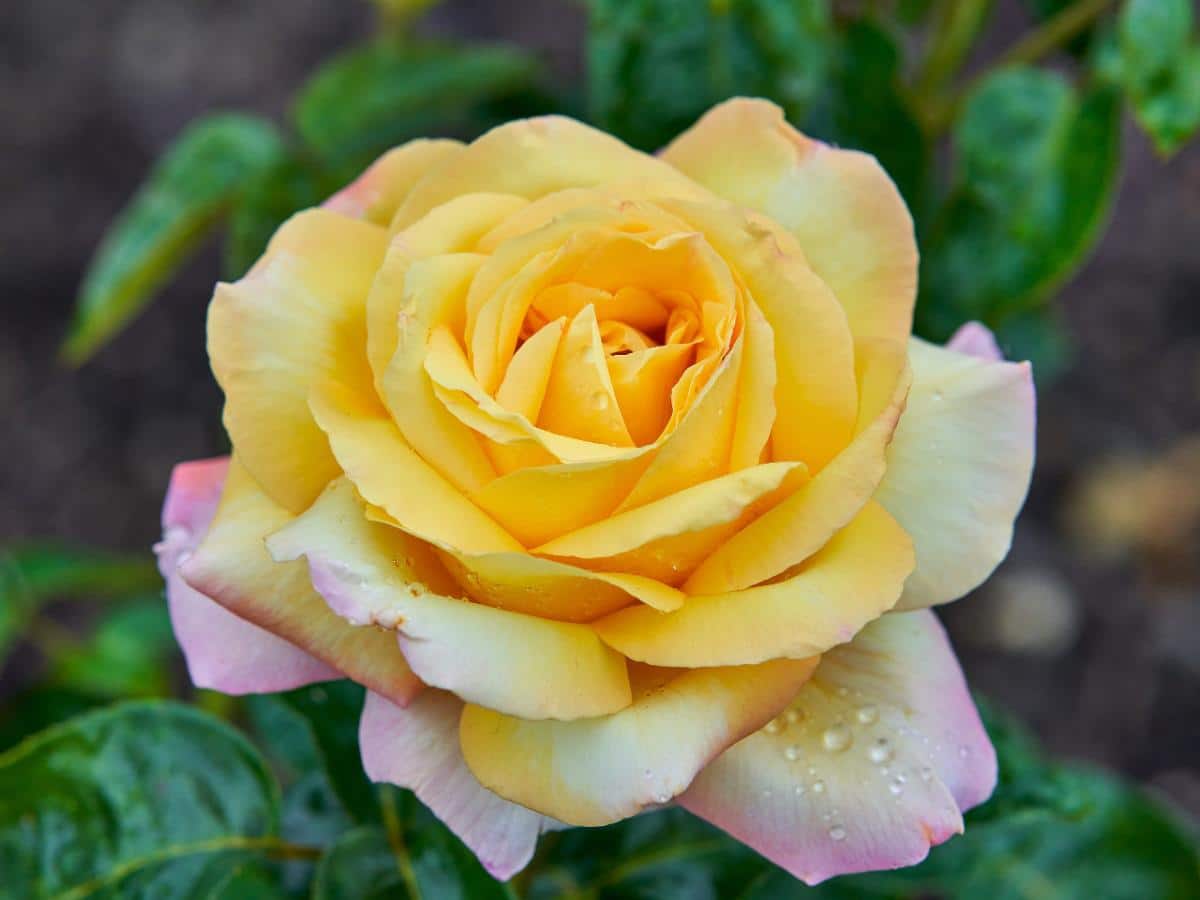
| Also known as: | ‘Gioia,’ ‘Gloria Dei,’ ‘Mme. A. Meilland’ |
| Introduced: | 1939 |
| Color: | Yellow, pink, and cream |
| Fragrance: | Moderate, fruity |
| Size: | 4’ to 6’ tall, 3’ wide |
| Zone: | 5b and warmer |
| Breeder: | Francis Meilland |
| Cultivar Group: | Hybrid Tea |
‘Peace’ is one of the most beloved roses in the world. The color in the early stages of bloom is amazing to behold. When the flowers open, the warm yellow and pink-tipped blossoms breathe a delicate, sweet scent.
‘Peace’ was originally named ‘Madame Antoine Meilland’ for the breeder’s mother. It was poised to go into commerce in 1939 – but then the shadow of war fell across Europe.
When France fell to the Nazis, the rose’s rootstock was smuggled out on one of the last trains to leave the country and flown to the Conrad Pyle Co. in the United States (now Star Roses), where they began propagating it. The rose was introduced on the day of Berlin’s surrender on 29 April 1945 – and named ‘Peace.’ It became an international bestseller.
‘Queen Elizabeth’
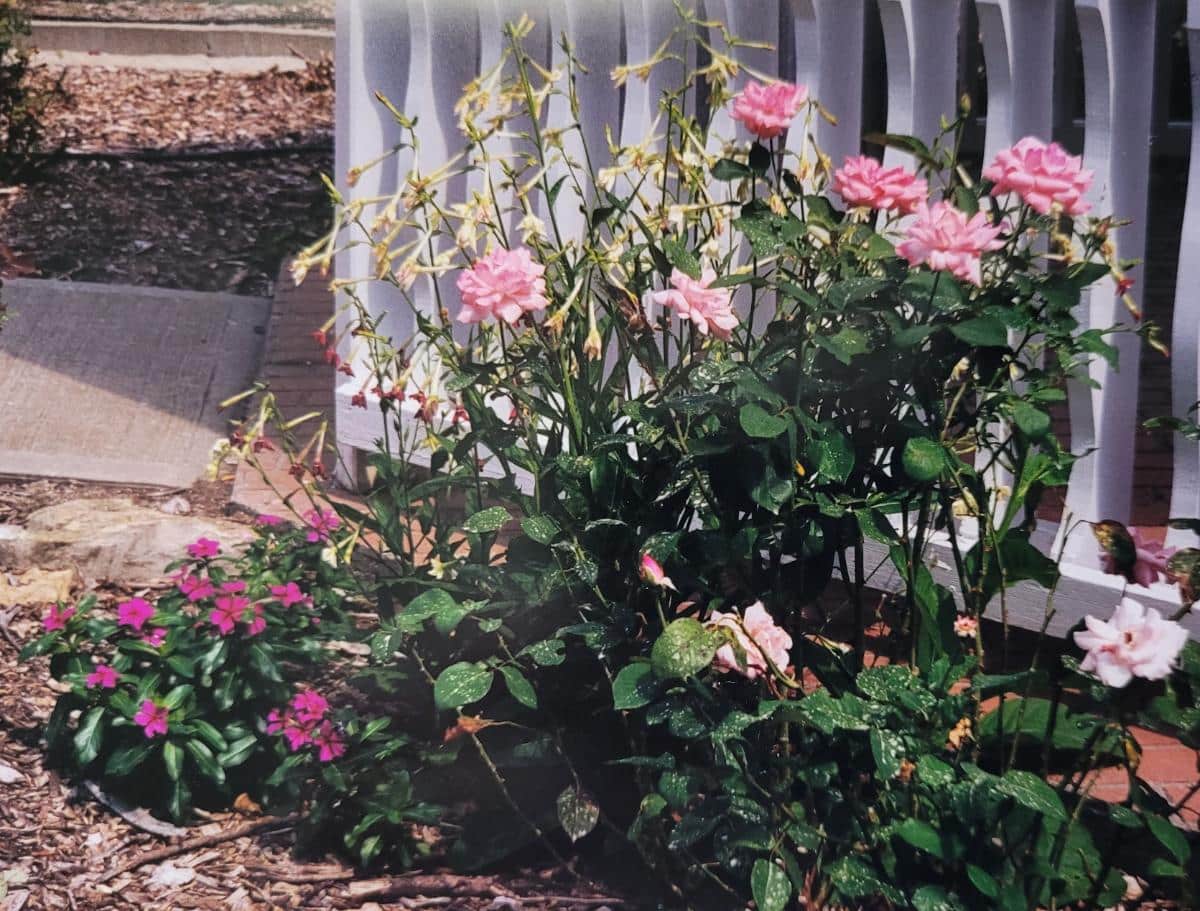
| Also known as: | ‘Queen of England’ |
| Introduced: | 1954 |
| Color: | Medium pink |
| Fragrance: | Moderate |
| Size: | 5 to 10’ tall, up to 3’ wide |
| Zone: | 5b to 9b |
| Breeder: | Dr. Walter E. Lammerts |
| Cultivar Group: | Grandiflora |
The ‘Queen Elizabeth’ rose, which celebrated the new Queen’s ascension to the throne in 1952, sports lovely medium-pink blooms that cover the large bush all through the growing season. She can easily produce as many as 20 blooms at a time.
I’ve seen some mentions of ‘Queen Elizabeth’ not having fragrance, but the ones I grew at the city rose garden did have a nice scent.
A strong, clean, tall rose, ‘Queen Elizabeth’ towers over some of us shorter rose fiends. This rose was deemed too tall to be a floribunda, so it was placed into a new category: a “grandiflora” class – basically a floribunda, only taller.
It’s easy to grow, disease-resistant and looks lovely. A good beginner’s rose.
Like the ‘Peace’ rose, ‘Queen Elizabeth’ doesn’t like to be cut back. She prefers to be tall and only lightly pruned. Respect the Queen’s wishes.
‘Fragrant Cloud’
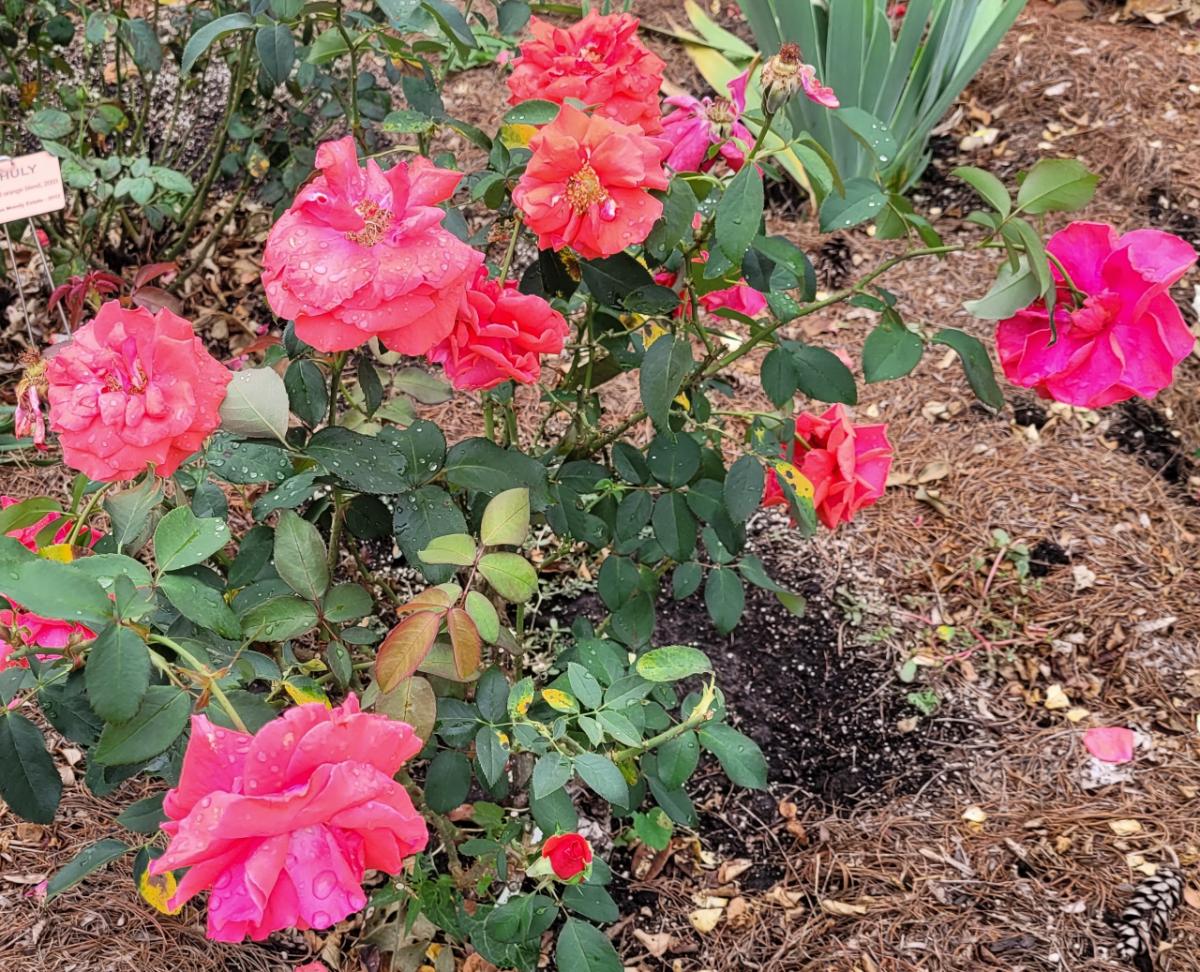
| Registration name: | TANellis |
| Also known as: | ‘Duftwolke,’ ‘Nuage Parfumé’ |
| Introduced: | 1963 |
| Color: | Coral red to geranium red |
| Fragrance: | Strong damask, spicy |
| Size: | 3 to 5’ tall, 2’ wide |
| Zone: | 7b to 10b |
| Breeder: | Mathias Tantau Jr. |
| Cultivar Group: | Hybrid Tea |
‘Fragrant Cloud,’ as its name states, is grown for its astonishing, intense fragrance that suffuses everything with spice and tea. In fact, after sniffing this rose, the nose is overwhelmed by fragrance and can’t smell anything else for a little while.
But it’s not the delightful fragrance alone that keeps people growing ‘Fragrant Cloud.’ Its vivid coral blooms are flushed with a tint that’s rarely found in any other rose. These colors change to a brilliant geranium red as the blossom ages. Pictures do not do justice to this Rose Hall of Fame inductee.
Pro tip: The first year after planting a ‘Fragrant Cloud’ (or any rose, for that matter), snip off buds so the roots and plant can concentrate on growing. Then, you’ll be rewarded with large, healthy blossoms the next year.
‘Iceberg
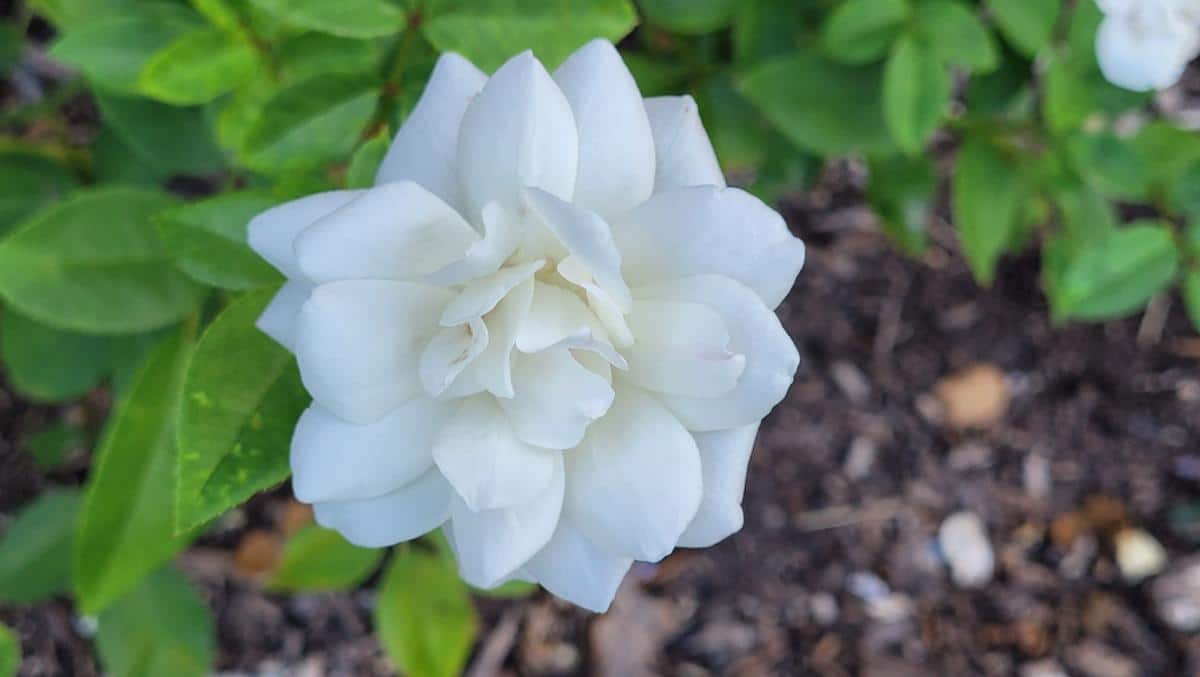
| Registration name: | KORbin |
| Also known as: | ‘Schneewittchen,’ ‘Fée des Neiges’ |
| Introduced: | 1958 |
| Color: | Bright White |
| Fragrance: | Mild |
| Size: | 2 to 5’ tall and wide |
| Zone: | 4b and warmer |
| Breeder: | Reimer Kordes |
| Cultivar Group: | Floribunda |
‘Iceberg’ is a floriferous rose with rafts of white flowers from early spring until fall, and an old favorite of mine. The large masses of glowing white blossoms are among the first flowers to open in spring, and they really light up in moonlight.
Fragrance is usually mild, but some ‘Iceberg’ roses have a stronger scent, which seems to vary between roses and between climates. So if you run across a sweetly-scented ‘Iceberg’ at your local nursery, snap it up and take it home!
This cast-iron rose can withstand heat waves and still look healthy, though it will bloom better when the weather cools back down. ‘Iceberg’s’ glossy light-green leaves are disease resistant. It’s a vigorous little rose, hardy, and a gem in the garden.
An interesting fact: When the weather stays cold after it blooms, the flowers will turn pink.
‘Double Delight’
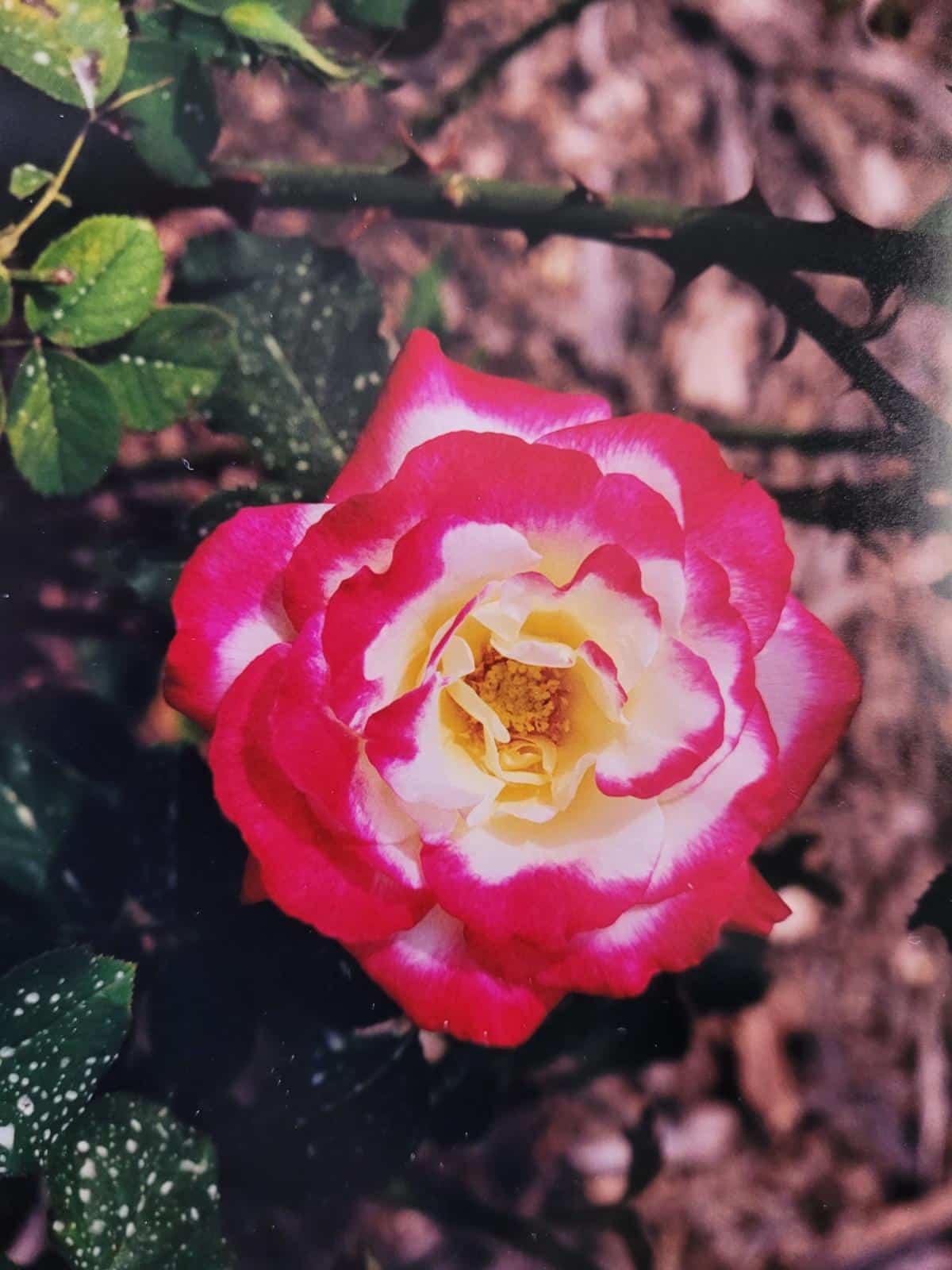
| Registration name: | ANDeli |
| Introduced: | 1977 |
| Color: | Red and creamy white |
| Fragrance: | Deliciously strong, sweet fragrance |
| Size: | 3 to 5’ tall, 2 to 5’ wide |
| Zone: | 7b through 10b |
| Breeder: | Herb Swim & Arnold Ellis |
| Cultivar Group: | Hybrid Tea |
Mere photos cannot capture how truly gorgeous the two-toned blossoms of ‘Double Delight’ are. The ruffled blossoms are an eye-catching ivory painted with cherry red. No two blooms are ever alike. The red color that blushes the petals varies based on the amount of UV light the flowers receive. If you pick the buds before they open and put them in a vase indoors, the roses will be all ivory white when they open.
What really makes ‘Double Delight’ a knockout is its strong, delicious scent, like lychee fruit or rose geranium fragrance. The smell is like dessert for your nose.
‘Double Delight’ needs extra winter protection, and it can be prone to blackspot and other fungal diseases if not grown in a place that gets at least 6 or more hours of sun. I generally don’t grow hybrid teas due to their tendency to be a blackspot magnet – but boy, oh boy, I’ll always make an exception for ‘Double Delight.’
‘Papa Meilland’
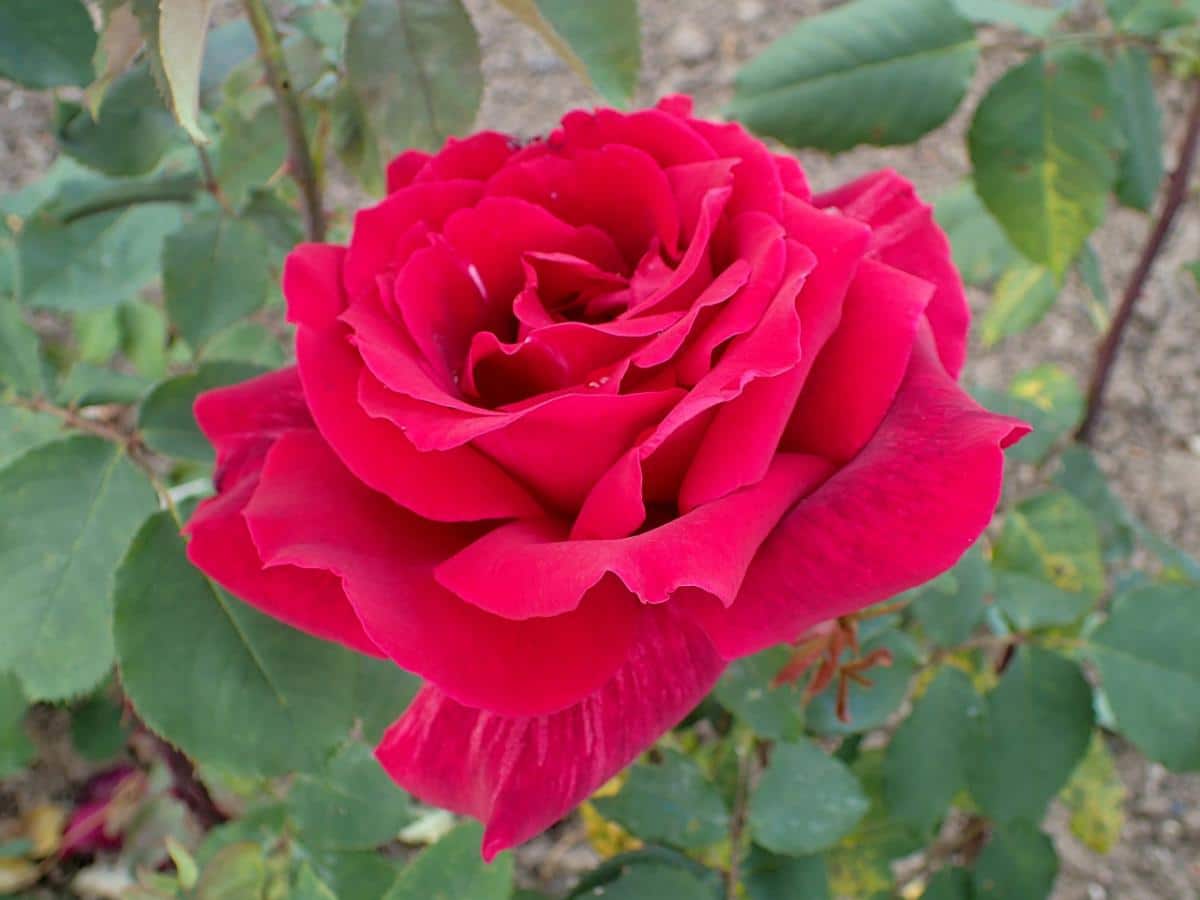
| Registration name: | MEIsar |
| Introduced: | 1963 |
| Color: | Velvety dark red |
| Fragrance: | Strong, spice and honey |
| Size: | 3 to 4’ tall, 2 to 4’ wide |
| Zone: | 7a and warmer |
| Breeder: | Alain Meilland |
| Cultivar Group: | Hybrid Tea |
‘Papa Meilland’ is named in honor of the breeder’s grandfather, Antoine Meilland. (He had a hand in developing the beloved ‘Peace’ rose, mentioned earlier.) This velvety dark red rose is blessed with a divine old rose fragrance.
‘Papa Meilland’ is a tall, robust rose and a star performer, responding to even the worst locations with vigorous growth. This rose is a veritable bloom factory. The rich, dark red of the blossoms don’t burn or discolor in the hot sun.
This Rose Hall of Fame selection (and any rose, really) will perk right up after a spring dose of alfalfa tea, rewarding you with vigorous growth and masses of scrumptious blossoms.
‘Pascali’

| Registration Name: | LENip |
| Also known as: | ‘Blanche Pasca’ |
| Introduced: | 1963 |
| Color: | Cream-white |
| Fragrance: | Light tea |
| Size: | 3 to 6’ tall, 2 to 4’ wide |
| Zone: | 7b through 11 |
| Breeder: | Louis Lens |
| Cultivar Group: | Hybrid Tea |
Some rose enthusiasts consider ‘Pascali’ to be one of the finest white hybrid teas ever bred. Though it’s not pure white, it’s pretty close. Its creamy blossoms seem to glow against its deep green foliage. These high-centered blossoms of snowy white would do well in a rose show, but also make lovely cut flowers.
Its foliage is also deep green and very handsome. ‘Pascali’ rose is very disease resistant, even in the relentless humidity of the southern United States. Relentless heat will take a toll on the plant, but once the heat breaks, this rose will be right as rain again.
‘Pascali’ has a regal form – one of its parents is ‘Queen Elizabeth.’ It can be grown as an excellent garden specimen or a centerpiece to the rose garden.
‘Just Joey’

| Registration Name: | CANjujo |
| Introduced: | 1972 |
| Color: | Apricot, buff orange |
| Fragrance: | Strong, citrus and tea |
| Size: | 3 to 4’ tall and wide |
| Zone: | 7b to 10b |
| Breeder: | P. Roger Pawsey |
| Cultivar Group: | Hybrid Tea |
‘Just Joey’ is an extremely popular hybrid tea rose. Its large, loose blossoms look like peonies, and the colors change as the rosebud unfurls and opens, its petals moving from peach to apricot to orange.
Once you breathe in its delicious fragrance, this rose will be irresistible. ‘Just Joey’ inherited its intense fragrance from one of its parents, ‘Fragrant Cloud,’ also an exceptional World Rose Hall of Fame honoree.
‘Just Joey’ is one of the first roses to bloom in spring, and the first flush is generally the best. Its blossoms are almost dinner-plate sized, but if you debud the rose – that is, remove all of the buds except for one – you could get a Godzilla blossom that measures 7 inches across. What an overachiever!
‘New Dawn’
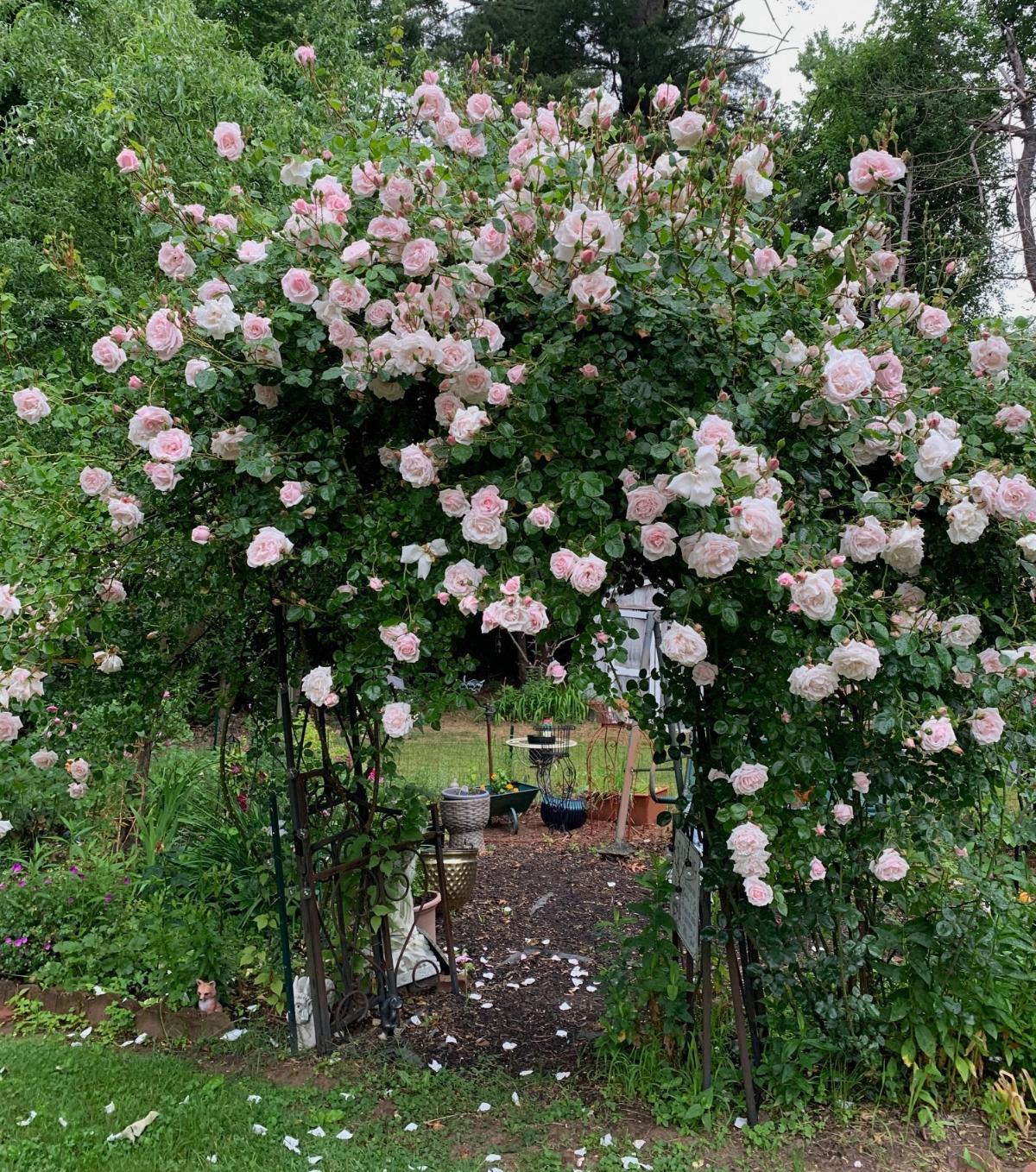
| Also known as: | ‘Everblooming Dr. W. Van Fleet,’ ‘The New Dawn’ |
| Introduced: | 1930 |
| Color: | Silvery, soft pink |
| Fragrance: | Moderate, sweet apple |
| Size: | 10 to 20’ tall |
| Zone: | 5b to 9b |
| Breeder: | Henry F. Bosenberg |
| Cultivar Group: | Hybrid Wichurana/Climber |
‘New Dawn’ is one of the best repeating climbing roses, blooming from early summer until fall. ‘New Dawn’ is a powerhouse that easily grows to 18 to 20 feet. Due to its rambling wichurana heritage, this rose is wildly vigorous and will crawl over anything in its way, while bearing abundant clusters of cheery roses in apple-blossom pink all overflowing with fragrance. Its glossy, dark-green foliage repels diseases. Its big thorns repel everything else!
‘New Dawn’ is disease resistant, which is helpful because this rose is going to be growing way over your head and often out of reach of your sprayer. But the blossoms are popping out all summer, so there’s always something blooming (and smelling sweet) on the ‘New Dawn’ rose.
Read more about climbing roses here.
‘Ingrid Bergman’
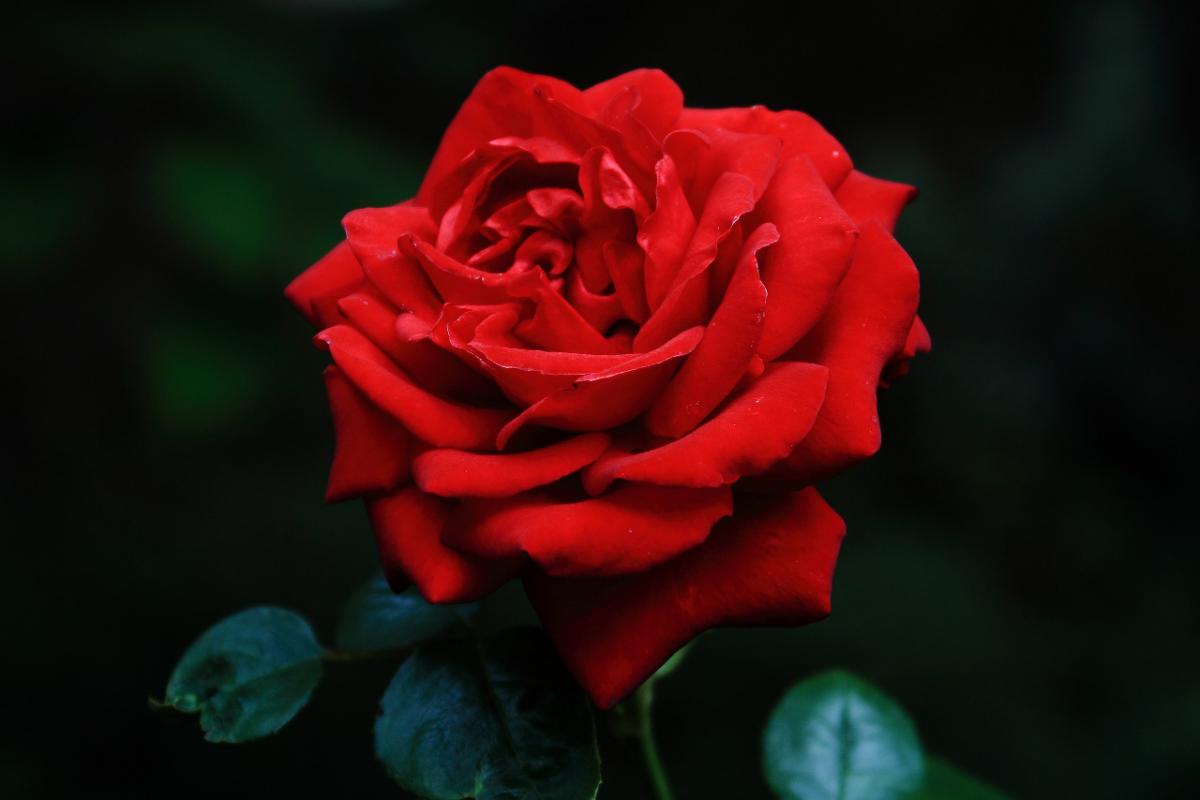
| Registration name: | POUlman |
| Also known as: | ‘Love You Mum’ |
| Introduced: | 1985 |
| Color: | Dark velvet red |
| Fragrance: | None to mild |
| Size: | 3 to 6’ tall, 3’ wide |
| Zone: | 4b or warmer |
| Breeder: | L. Pernille Olesen and Mogens Olesen |
| Cultivar Group: | Hybrid Tea |
One of the most reliable red hybrid teas available, ‘Ingrid Bergman’ bears large, vibrant red roses on a strong, upright bush and is a consistent bloomer all season until the frosts arrive. This hardy rose and springs back from early frosts.
The rose is often used in shopping centers as a bedding or edging rose because it makes rounded hummocks of large, velvety red blooms and dark green foliage that always look lovely.
‘Ingrid Bergman’ roses don’t fade in the heat as other red blossoms do, and she is one of the very few roses that thrives in high heat and burning sun.
Cut flowers last up to 2 weeks and look magnificent in a vase.
As with many (or all) roses, the fragrance of the rose varies. In general, Ingrid has little or no fragrance. However, in some areas, she will have moderate or even strong fragrance. Roses are strange; what can I say?
‘Bonica’
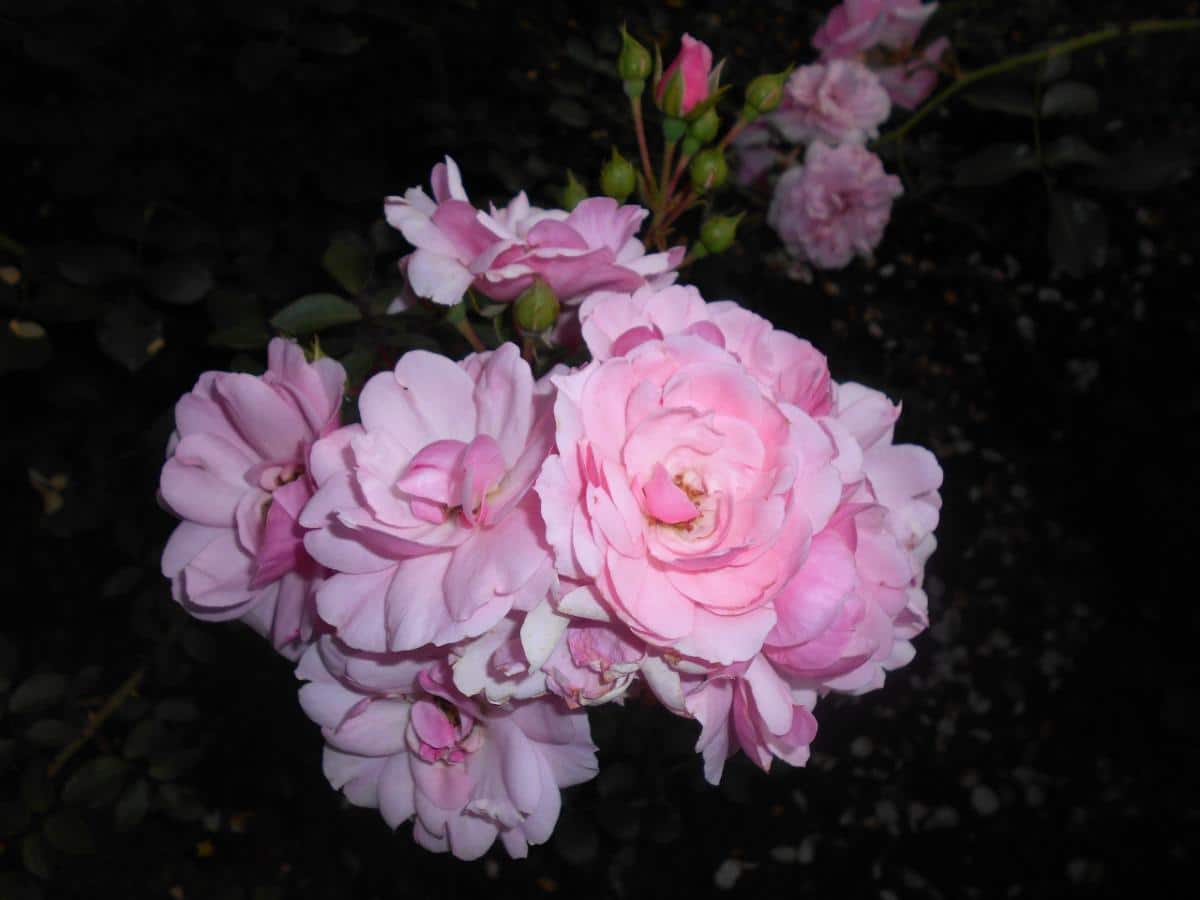
| Registration name: | MEIdomonac |
| Also known as: | ‘Bonica 82’ |
| Introduced: | 1975 |
| Color: | Pink |
| Fragrance: | Mild |
| Size: | 2 to 5’ tall, 4 to 6’ wide |
| Zone: | 4b to 9b |
| Breeder: | Marie-Louise Meilland |
| Cultivar Group: | Floribunda/Shrub |
Another “plant it and forget it” carefree rose. ‘Bonica’ is a continuous bloomer and is never without flowers. It bears abundant sprays of blossoms that are medium pink at the center and lighter pink at the edges. Flowers have a pleasant, sweet scent.
The lush, semi-glossy foliage is disease-resistant, and the rose stays compact and tidy. It sails through everything nature throws at it and still looks glowing. ‘Bonica’ is hardy as heck with very little dieback in winter and doesn’t need spraying.
The spring flush of roses can be pushed with a high nitrogen fertilizer, which also improves rebloom. It doesn’t need a lot of pruning, either.
Read more about 20+ expert tips for pruning roses in spring.
Craig Tufts, author of The Backyard Naturalist, states that ‘Bonica’ is also wildlife-friendly. It bears heavy crops of hips in fall and through the winter. Plant it near bird feeders and birdbaths to give your feathered friends a thorny place to escape predators.
‘Pierre de Ronsard’

| Registration name: | MEIviolin |
| Also known as: | ‘Eden,’ ‘Eden Climber,’ ‘Eden Rose 85,’ ‘Grimpant de Pierre de Ronsard’ |
| Introduced: | 1985 |
| Color: | Cream and carmine pink |
| Fragrance: | Moderate |
| Size: | 3 to 12’ tall |
| Zone: | 5b to 9b |
| Breeder: | Marie-Louise Meilland |
| Cultivar Group: | Climbing shrub |
‘Pierre de Ronsard’ bears double, old-fashioned rose blooms that look almost unreal. They start as white or creamy-white fat rosebuds, then turn into a little white ball of carmine-edged petals. Then they open into a large, soft pink and white rose with ruffled petals and a lovely fragrance.
It will take time to establish this rose and allow it to grow out of a bush-like form into a proper climbing rose. It will take about as long for it to start blooming heavily – it will start with a few flushes of flowers and scattered blossoms before it reaches its full glory, blooming almost continually through the growing season.
Pierre needs to focus on growing roots and stems instead of flowers for the first year or two, so snip off any buds you see for the first year after it’s planted. When it’s ready, it will develop glossy foliage and huge rosebuds – and then stand back for the show.
In cooler areas, ‘Pierre de Ronsard’ does very well and is disease-resistant. In warmer areas, the rose will need to be sprayed with sulfur.
‘Elina’
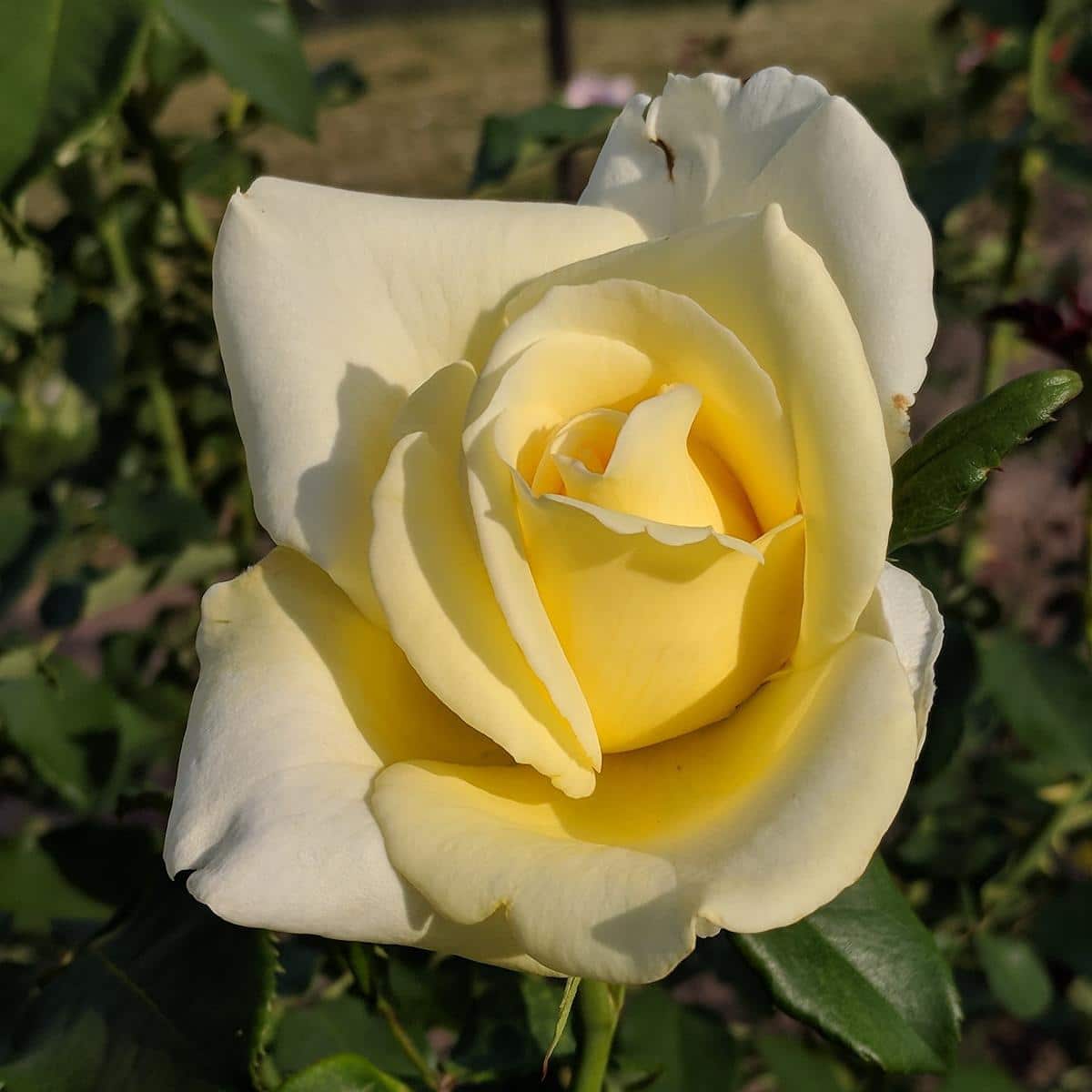
| Registration name: | DICjana |
| Also known as: | Peaudouce |
| Introduced: | 1983 |
| Color: | Light yellow |
| Fragrance: | Mild |
| Size: | 3 to 6’ tall, 3’ wide |
| Zone: | 7b and warmer |
| Breeder: | Patrick Dickson |
| Cultivar Group: | Hybrid Tea |
‘Elina’ sports high centered, slightly fragrant blooms are borne on a tall bush with dense, glossy foliage. The primrose yellow flowers are outstanding – big plump buds that open into huge, perfect blooms. ‘Elina’ keeps popping up enormous creamy blossoms in the softest of yellows – and the bloom color changes as the weather changes.
In hot areas with long blooming seasons, ‘Elina’ will keep blooming and blooming, even when temperatures hit 100 degrees. She’s a vigorous rose with healthy foliage that doesn’t need spraying, and will grow up to 8 feet tall in these hot areas.
‘Graham Thomas’
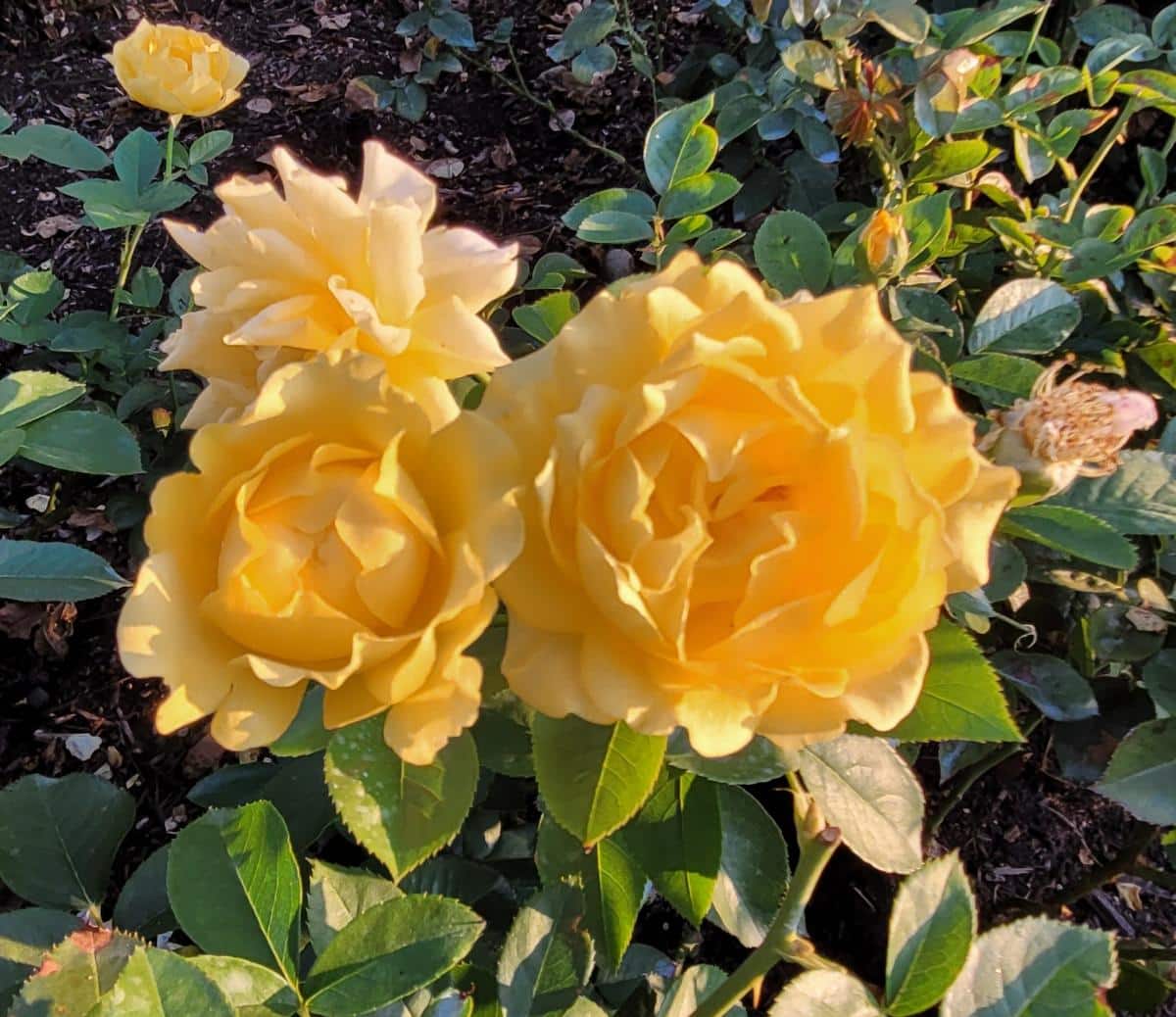
| Registration name: | AUSmas |
| Introduced: | 1983 |
| Color: | Deep golden yellow |
| Fragrance: | Strong tea |
| Size: | 5 to 10’ tall, 4 to 8’ wide |
| Zone: | 5b to 10b |
| Breeder: | David Austin |
| Cultivar Group: | English Rose/Shrub |
The venerable rosarian Graham Thomas chose this rose to be his namesake. He wrote later, “It is interesting to recall that the [rose] was the only rich soft yellow amongst hundreds of seedlings. But on looking back, one can see that it has ever been a rare colour ...”
This rose sports large, golden-yellow blooms with old-fashioned form and a delicious tea fragrance. ‘Graham Thomas’ will grow as a climber, so plant it near a fence or trellis so it has something to clamber over.
It’s not a foolproof rose in all areas. ‘Graham Thomas’ languished in the hot Missouri summers when I grew it in the rose garden. All the same, its blossoms still looked and smelled amazing. It’s such a lovely rose that one tends to forgive the faults.
Rustic and repeat-flowering, ‘Graham Thomas’ is one of the most famous English roses.
‘Sally Holmes’
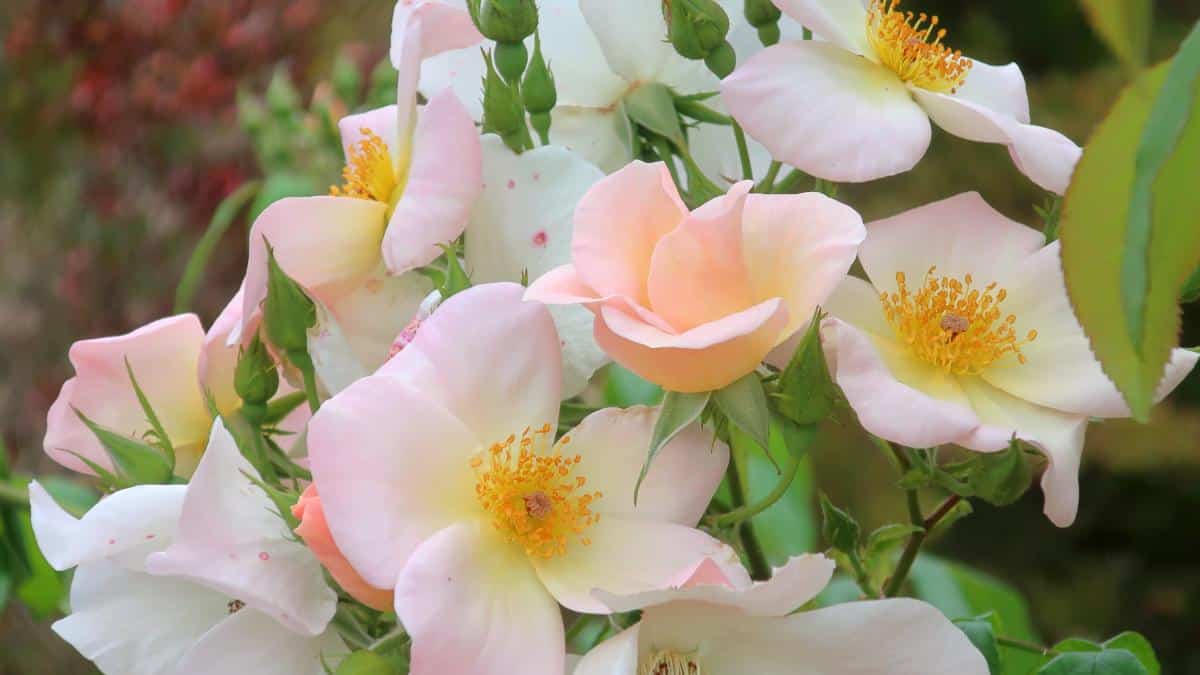
| Introduced: | 1976 |
| Color: | Cream with yellow stamens |
| Fragrance: | Mild |
| Size: | 6 to 12’ tall, 3 to 5’ wide |
| Zone: | 5b to 9b |
| Breeder: | Robert A. Holmes |
| Cultivar Group: | Hybrid Musk/Shrub |
A cross between ‘Ivory Fashion’ and ‘Ballerina,’ ‘Sally Holmes’ is a tall, lovely rose that can be grown as a pillar, climber, or shrub. The single cream blossoms have yellow stamens and come in large clusters. When ‘Sally Holmes’ is in full bloom, she is a real showstopper!
This vigorous rose will need a lot of room, but ‘Sally Holmes’ will make an amazing backdrop (or centerpiece) to the garden. Blossoms are borne in large trusses of blossoms that contain from 8 to over 35 buds. The leaves are all but hidden by the flowers that cover the rosebush.
Areas with cool days and nights will see additional coral and pink colors in this rose’s petals. The buds open in a soft coral pink, then the flowers fade from apricot to white as they age. In warmer areas, the flowers are white. The foliage is generally disease-resistant. ‘Sally Holmes’ has very few thorns and will tolerate some shade.
The cut flowers also have a long vase life. Cut them just as the buds show color, and they’ll open for many days.
‘Cocktail’

| Registration name: | MEImick |
| Introduced: | 1957 |
| Color: | Carmine red with yellow center |
| Fragrance: | Mild spice |
| Size: | 6 to 8’ tall, 3 to 4’ wide |
| Zone: | 4b and warmer |
| Breeder: | Marie-Louise Meilland |
| Cultivar Group: | Shrub/Climber |
‘Cocktail’ can be grown as a climbing rose or a shrub. From spring until frost, it bears single blossoms of cherry red with a primrose yellow eye that fades to cream as it ages. ‘Cocktail’ flowers appear grouped in abundant bouquets of 3 to 15 flowers through the growing season. A fragrant cloud with spicy notes floats around them.
The dark green foliage is tinged with bronze as it opens, and is dense, vigorous, and disease resistant. This charming rose is easily trained as a hedge or a climber.
‘Knock Out’
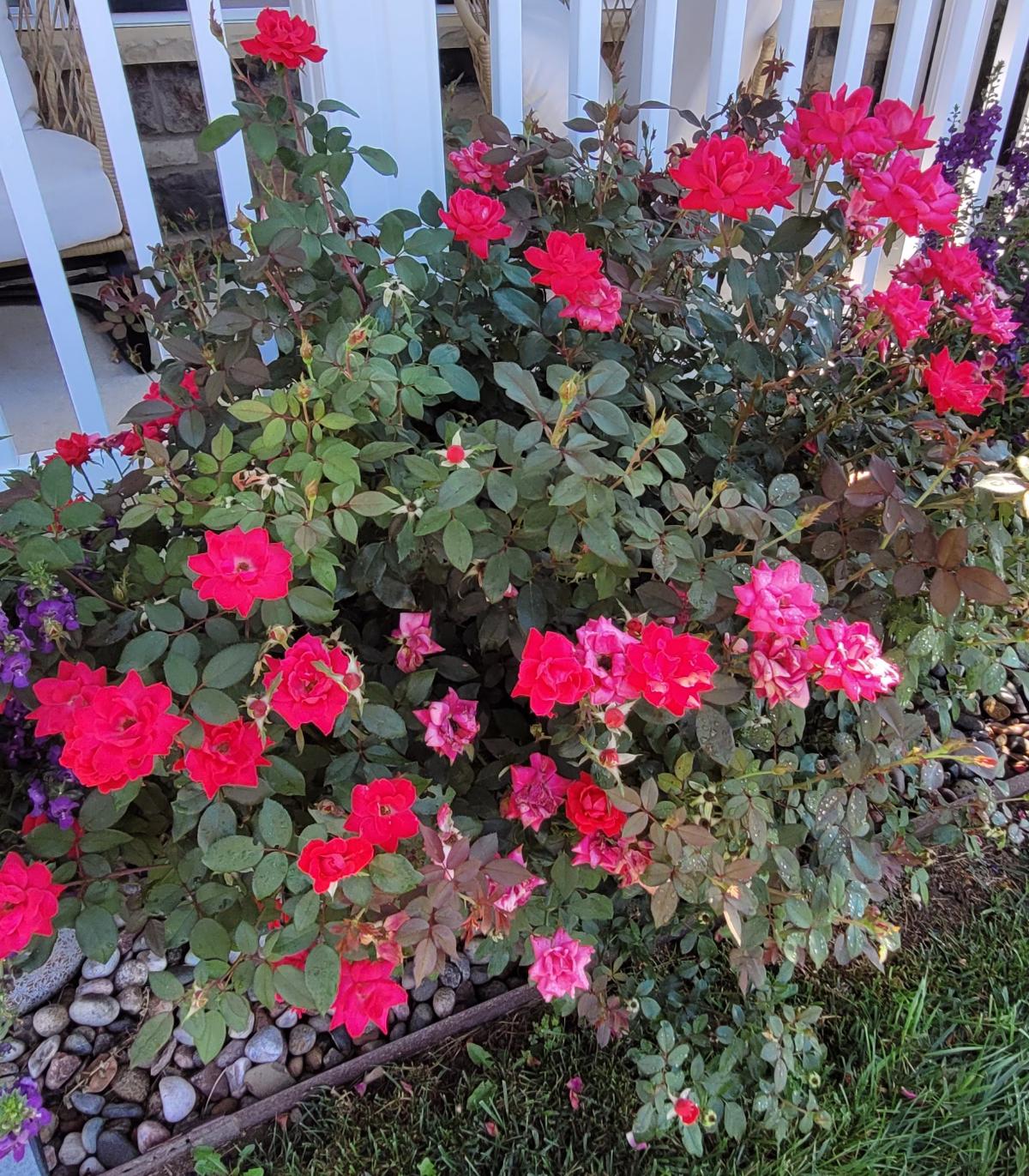
| Registration name: | RADrazz |
| Introduced: | 2000 |
| Color: | Red |
| Fragrance: | Mild |
| Size: | 2 to 4’ tall by 3 by 4’ wide |
| Zone: | 4b to 9b |
| Breeder: | William J. Radler |
| Cultivar Group: | Shrub |
The ‘Knock Out’ rose upended the rose industry. It was bred first and foremost for disease resistance, hardiness, and vigor. It flowers from spring to frost, creating a stunning show of cheerful, cherry-red blooms. This rose forms an attractive, dense bush that doesn’t need pruning. Dead blooms simply fall off – no deadheading required. Blackspot and powdery mildew bounce off the glossy green leaves without leaving a dent.
The ‘Knock Out’ rose quickly surpassed Peace as the world’s most popular rose by selling over 150 million roses in 20 years. Not bad!
‘Knock Out’ roses can fit into any landscape in most climates. They can grow in places where regular roses wouldn’t have been caught dead in – traffic medians, strip malls, and pretty much anywhere that had enough soil to fit a rose into. Plant them individually as a focal point. Add them into a group of shrubs, or plant them in large groups to create a colorful hedge.
‘Knock Out’ roses are now available in different colors and sizes, and all of them are just as disease-resistant and low-maintenance as the original ‘Knock Out.’
Read more about 24 Hardy and Resilient Rose Varieties You Can Grow Easily
‘Flower Carpet’ Pink

| Registration name: | NOAtraum |
| Also known as: | ‘Blooming Carpet,’ ‘Emera, Flora Carpet, Pink Veil, Heidetraum |
| Introduced: | 1990 |
| Color: | Deep pink flowers |
| Fragrance: | Mild |
| Size: | 2 to 3’ tall, 3 to 4’ wide |
| Zone: | 4 to 10 |
| Breeder: | Werner Noack |
| Cultivar Group: | Groundcover |
This old standby still keeps performing. I remember how ‘Flower Carpet’ roses in pink, white, and red seemed to appear everywhere in the 1990s. It made sense because they were compact landscape roses that were disease-resistant and hardy – something you didn’t see a lot of in the rose world at the time.
The ‘Flower Carpet’ groundcover roses needed only the lightest pruning to stay nice and tidy. These roses were all awash with large clusters of fluffy, deep pink flowers that looked nice against the arching, disease-resistant leaves.
Rose breeder Werner Noack, who was determined to breed disease-resistant garden roses, did not spray his selection fields with fungicides, and selected only roses that displayed disease resistance. His work certainly paid off: In 1998, The Montreal Botanical Garden surveyed this rose for resistance to black spot, powdery mildew and rust, and ‘Flower Carpet’ Pink came through with an incredibly low 0% to 5% infection rate.
‘Flower Carpet’ roses filled a need for hardy, no-maintenance, fail-proof roses. Later, the ‘Knock Out’ rose would come to dominate that field, but ‘Flower Carpet’ roses are still good for anybody who needs a rose that they can plant and forget.
Conclusion
These roses, considered the best by some of the world’s top rosarians, will be lovely in almost any garden around the world.
The WFRS meets every three years, and at the conventions, another rose is added to the list. Their next WFRS convention takes place in 2025 – so stay tuned for the next addition to the Rose Hall of Fame.
The next article will cover the Old Rose Hall of Fame – popular historical roses and roses of genealogical importance. We’ll go through that whole list as well – and there are a lot of old favorites you will recognize.


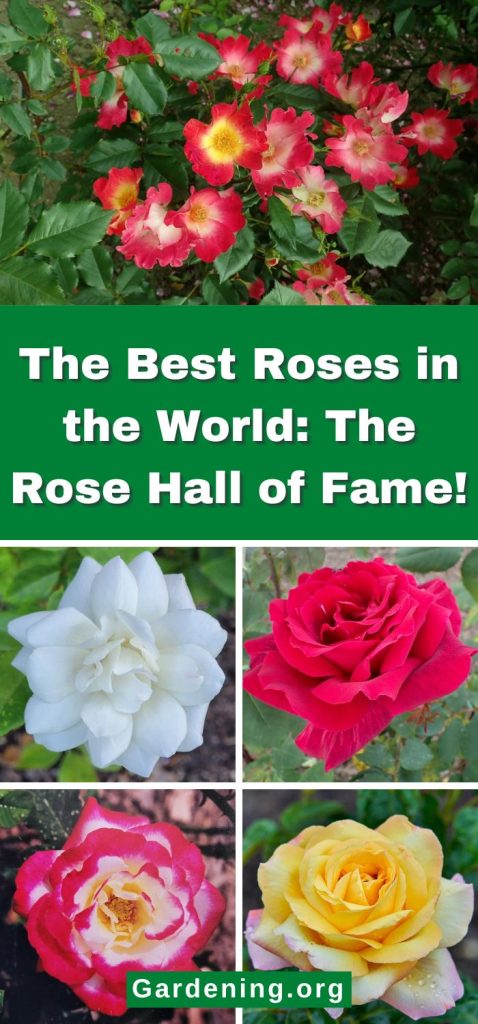

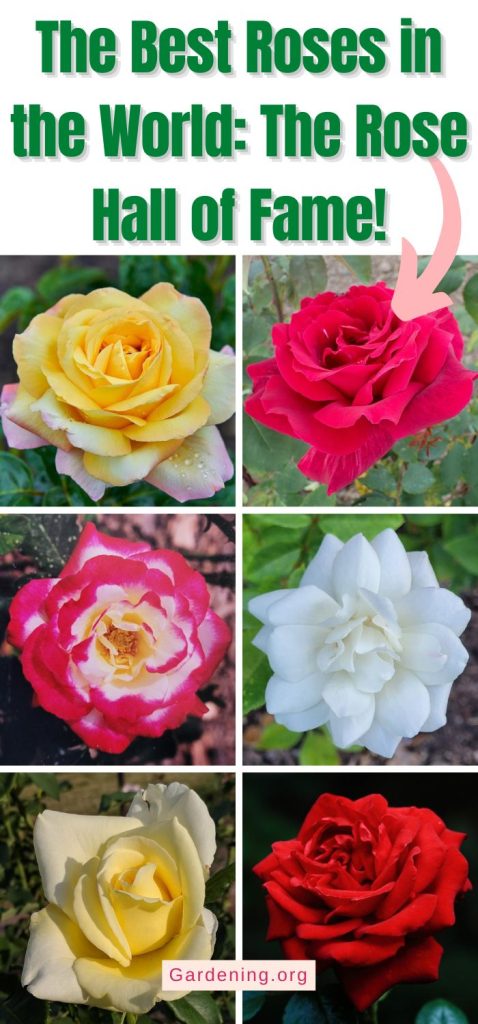



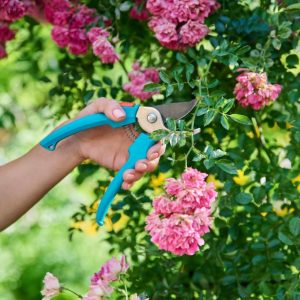
Leave a Reply